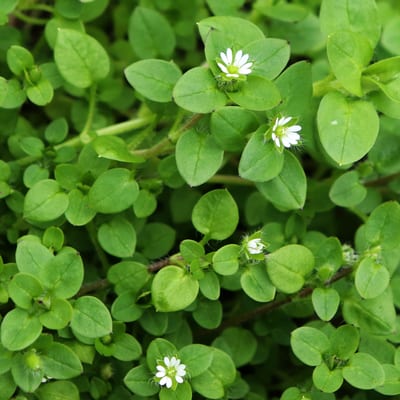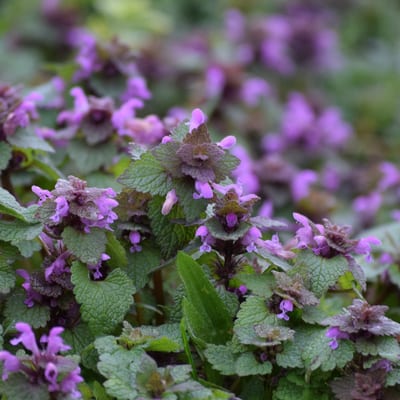After battling spring weeds and summer weeds you are probably relieved that fall has arrived. But just because the temperatures are cooler doesn’t mean the war on weeds is over. Fall is an important time to tackle weeds before they go to seed and become an even bigger problem in the spring. Even though your gardens have stopped growing, there are weeds that will still sprout in fall. Here is a list of the most common weeds you will find around your yard in the fall.
Types of Fall Weeds:
Chickweed
Chickweed can grow 3-6″ in the sun or up to 18″ in the shade. It has five-petaled flowers that are arranged in a star pattern with smooth, oval leaves. It produces seeds in the spring that germinate in the fall and can remain dormant in the soil for up to ten years. Chickweed does well in poorly drained soils and weak, thin lawns.
Poison Ivy
Poison ivy and poison oak are both known for their potent, itchy rashes. Fall is a common time for people to accidentally brush up against this plant during fall cleanup. Poison ivy and poison oak both have a chemical called urushiol which causes severe reactions in humans when touched. Both plants can be identified by their clusters of three leaves. Poison ivy can grow as a vine or a shrub while poison oak is only a shrub. In the fall, their green smooth leaves turn to a reddish-orange color, which makes them even harder to spot amongst all the other fall vegetation.
Corn Speedwell
Corn speedwell grows in moist or dry soils, in full sun or shade. If your grass is weak or thin, corn speedwell will often take advantage. It grows in large patches and is very common during spring and early summer. Plants grow and flower from early spring through summer. The plant reproduces via seeds, which germinate in the late summer, fall, or spring. It produces small blue flowers that are ¼ to ½-inch across.
Purple Deadnettle
Purple deadnettle It is an annual winter weed that grows fast and can quickly take over fencerows and farm fields. Despite its name, the purple deadnettle does not sting you when you touch it. It is a member of the mint family and is related to the henbit. The leaves are edible and have known medical properties such as a diuretic and promote kidney health.
Hairy Bittercress
Hairy bittercress is a fast-growing spring annual. This weed prefers cool, moist soil, shade, and grass that is mowed too short. In the summer it is not as common but pops up again in the fall when temperatures get cooler. Trying to pull hairy bittercress by hand is not recommended because the plant has a long taproot that makes it all but impossible to pull it all up. The only sure way to control hairy bittercress is through cultural and chemical means. Controlling hairy bittercress early in the spring is essential to protect the rest of your yard from an infestation.
Get Help From the Pros at Emerald Island Lawn Service
Fall weed prevention is essential to winning the war on weeds. At Emerald Island Lawn Service we offer year-round fertilization programs designed specifically for your yard so you don’t have to deal with annoying weeds. A great way to rejuvenate your grass in the fall and make it more resistant to weeds through aeration and overseeding. Call and set up an appointment today.
Need help with fall tree care? Our tree and shrub program will ensure that your trees and ornamentals stay strong and healthy through the winter.
Give us a call at 865-588-4497 for more information. You can also request an easy quote here.
